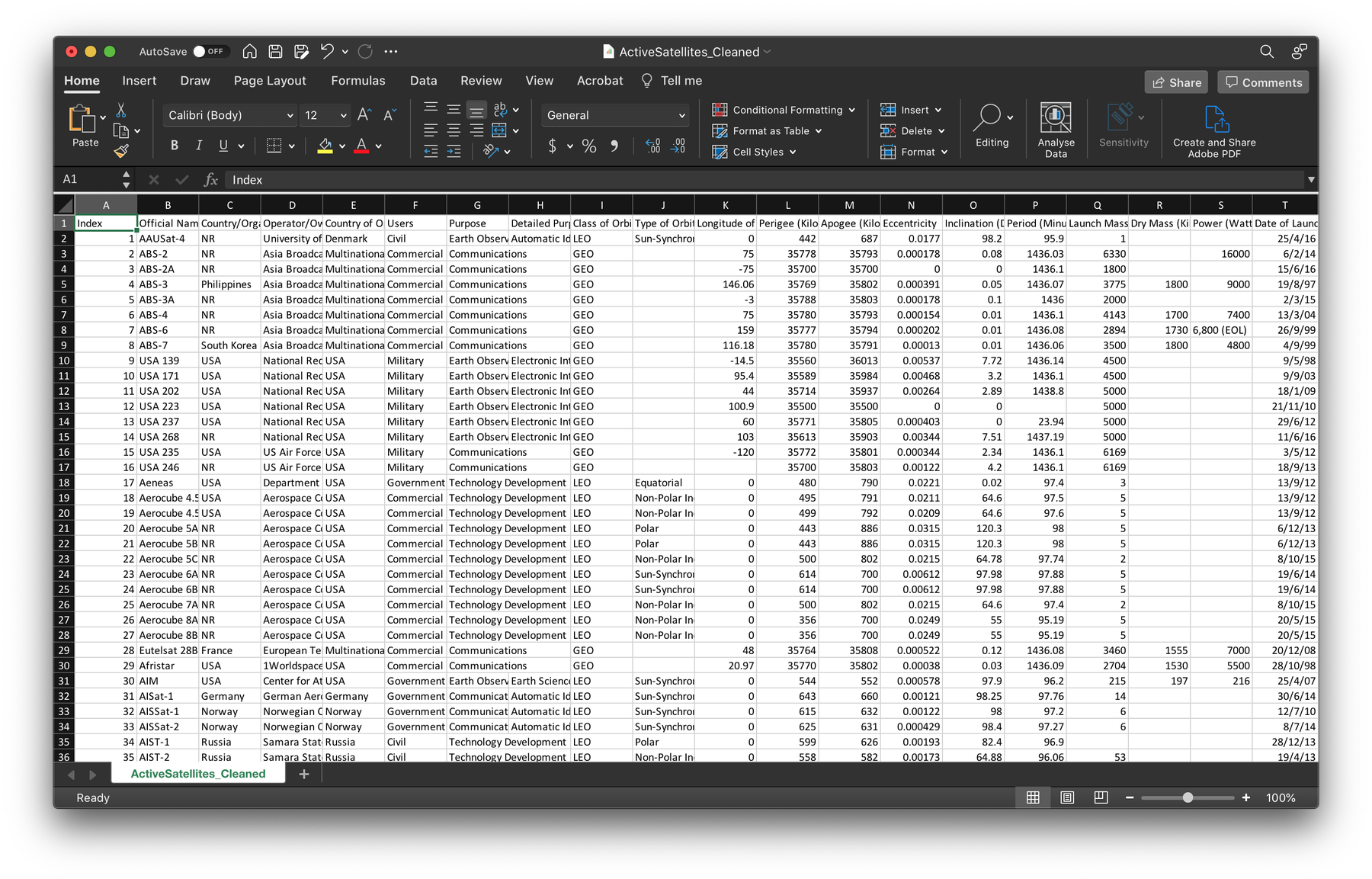Prepare your data
We're going to be using this dataset published on Kaggle of Active Satellites in Orbit Around Earth (as of 2016). Since then, thousands of satellites have been launched, but this dataset contains over 1400 rows for us to work with. Download it at the link above (registration required), or grab it right here.
📖 Quick glossary
Some of these astronomical terms can be a bit confusing at first. Here are a few definitions to help out. We'll only be using a few columns from this dataset.
- Geosynchronous — objects in a rotational lock with the earth. These satellites spin at the same speed as the earth and always face the same point of longitude.
- Perigee — the closest distance to earth during orbit
- Apogee — the furthest distance from earth during orbit (a perfectly circular orbit will have an equal perigee and apogee)
- Inclination — the tilt of orbit. 0º = perfect rotation around the equator, 90º = over the north and south poles, etc.
- Period — minutes required to complete a single orbit. Geosynchronous (see above) satellites rotate with the earth once per day (~1440 minutes)
🧹 Data cleaning
Once downloaded, open your CSV in your preferred spreadsheet editor (Excel, Google Sheets etc). You'll notice that the data is fairly clean and consistent. There are only a few edits we'll make, and if you want to skip ahead feel free to download the cleaned CSV below.
Firstly, in the Period (minutes) column, there are a few instances of "8 days" instead of an integer of minutes. Go ahead and replace these with 11520. Secondly, while we won't be using the Date of Launch column, it may contain inconsistent date formatting depending on your spreadsheet editor (03 vs 2003 etc). Clean this up with a consistent format. If using Excel, try to split by string "/" and separate the day, month and year into separate columns, then re-merge. You might also like to keep these separated for year sorting and filtering down the track. That's all for now.
Create a unique identifier
Unreal Engine needs a unique identifier for each item in a spreadsheet which it uses for a Row Name attribute. As this dataset doesn't reliably have one, create an Index column and input the row number for each row (you should be able to input 1, then 2, and auto-fill the rest). UE will look to this first column to generate row names.

